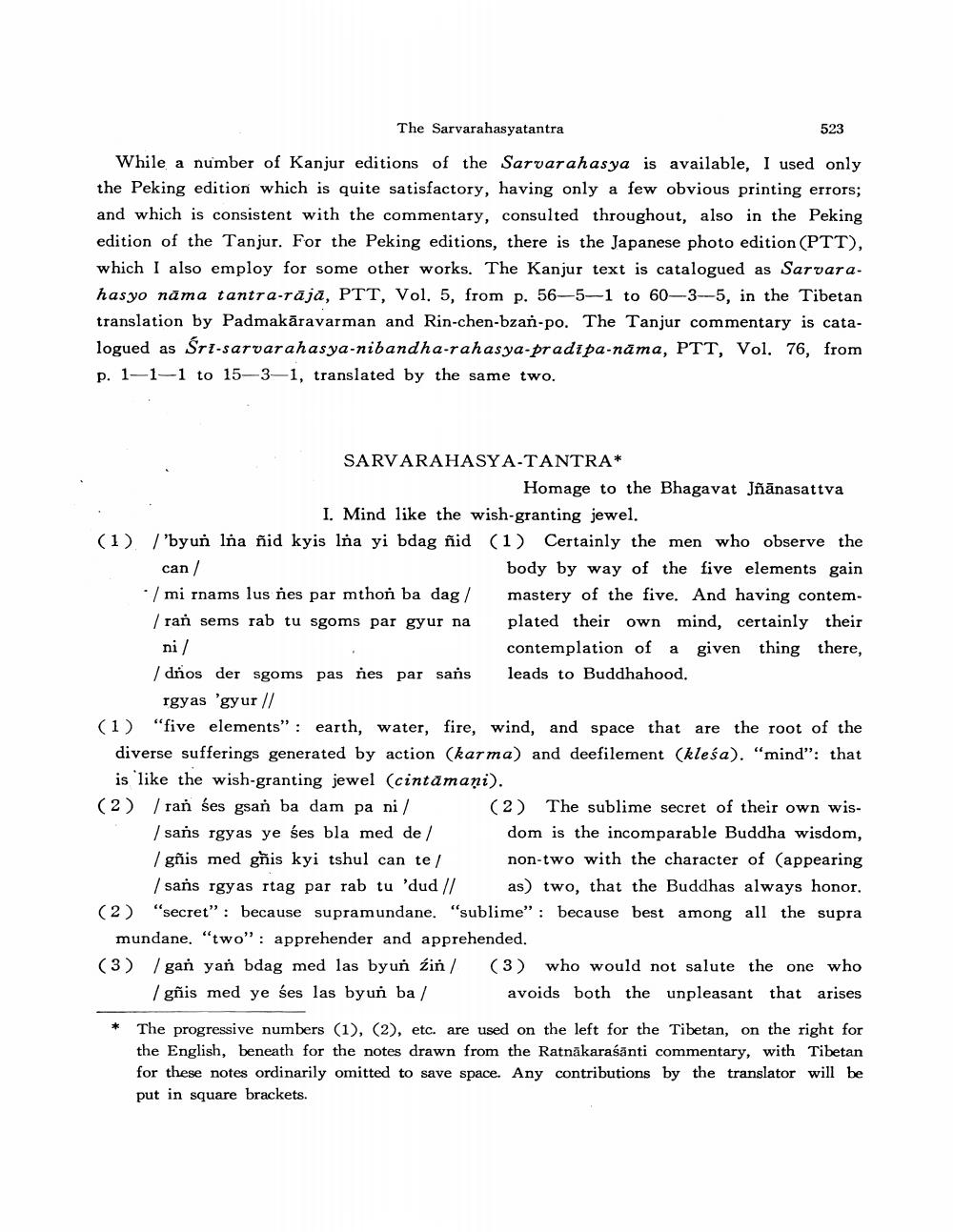Book Title: Sarva Rahasya Tantra Author(s): Alex Wayman Publisher: Alex Wayman View full book textPage 3
________________ The Sarvarahasyatantra 523 While a number of Kanjur editions of the Sarvarahasya is available, I used only the Peking edition which is quite satisfactory, having only a few obvious printing errors; and which is consistent with the commentary, consulted throughout, also in the Peking edition of the Tanjur. For the Peking editions, there is the Japanese photo edition (PTT), which I also employ for some other works. The Kanjur text is catalogued as Sarvara. hasyo nāma tantra-rājā, PTT, Vol. 5, from p. 56–5–1 to 60-3--5, in the Tibetan translation by Padmakāravarman and Rin-chen-bzan-po. The Tanjur commentary is catalogued as Sri-sarvarahasya-nibandha-rahasya-pradipa-nāma, PTT, Vol. 76, from p. 1--1-1 to 15-3-1, translated by the same two. SARVARAHASYA-TANTRA* Homage to the Bhagavat Jñanasattva I. Mind like the wish-granting jewel. (1) /'byun Ina ñid kyis Ina yi bdag ñid (1) Certainly the men who observe the can / body by way of the five elements gain */ mi rnams lus nes par mthon ba dag / mastery of the five. And having contem/ ran sems rab tu sgoms par gyur na plated their own mind, certainly their ni / contemplation of a given thing there, / dños der sgoms pas nes par sans leads to Buddhahood. rgyas 'gyur // (1) "five elements" : earth, water, fire, wind, and space that are the root of the diverse sufferings generated by action (karma) and deefilement (klesa). "mind”: that is like the wish-granting jewel (cintamani). (2) / rań śes gsan ba dam pa ni/ (2) The sublime secret of their own wis sans rgyas ye ses bla med de / dom is the incomparable Buddha wisdom, / gñis med għis kyi tshul can te / non-two with the character of (appearing / sans rgyas rtag par rab tu 'dud // as) two, that the Buddhas always honor, (2) "secret": because supramundane. "sublime" : because best among all the supra mundane. "two": apprehender and apprehended. (3) / gan yan bdag med las byun zin/ (3) who would not salute the one who / gñis med ye ses las byun ba / avoids both the unpleasant that arises The progressive numbers (1), (2), etc. are used on the left for the Tibetan, on the right for the English, beneath for the notes drawn from the Ratnākaraśānti commentary, with Tibetan for these notes ordinarily omitted to save space. Any contributions by the translator will be put in square brackets.Page Navigation
1 2 3 4 5 6 7 8 9 10 11 12 13 14 15 16 17 18 19 20 21 22 23 24 25 26 27 28 29
